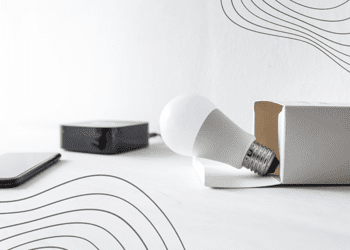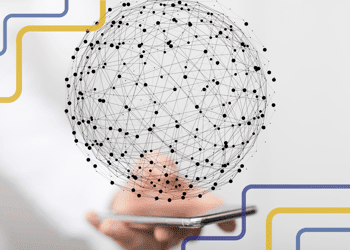The Internet of Things (IoT) is a host of physical devices around the world that collect and share data across the internet. The rise of wireless networks and cheap data processors makes it possible to turn anything into part of the IoT. This adds a certain level of digital intelligence to devices that enable them to communicate without human involvement, effectively merging the physical and digital worlds. In doing so, however, we have created a new concern for IoT internet requirements.
Each of these devices requires a different level of IoT internet requirements, according to their designed use and connectivity needs. As you will see, the rise in the popularity of the IoT means a rise in the need for increasing bandwidth, security, and connectivity. The internet is vital for the Internet of Things to be a viable resource to the world.
The Advance of the Internet of Things
“The IoT integrates the interconnectedness of human culture — our ‘things’ — with the interconnectedness of our digital information system — ‘the internet.’ That’s the IoT,” Kevin Ashton, who coined the term ‘Internet of Things’ in 1999, as shared in an interview with ZDNet.
There are more connected things than people in the world. Gartner.com calculates that 8.4 billion IoT devices were in use in 2017 and will likely reach 20.4 billion by 2020. Within those 8.4 billion devices, over half will be consumer products like smart TVs and smart assistants. As prices drop and the numbers of available connected devices rise, our living and working environments will become filled with smart products.
Statistics on IoT Internet Requirements
IoT internet requirements demand flexible, stable, and efficient networks. As the IoT grows exponentially, so will the connectivity challenges. The following statistics give an overview of global IoT usage.
- According to Internet World Stats, there were about 3.7 billion global internet users in December 2017.
- Since 2009, consumer broadband usage has increased 50-60 percent each year.
- The average global internet connection speed in 2016 was 6.4 Mbps.
- In 2017, the average mobile internet user spent 3.25 hours a day using mobile apps.
- It’s estimated that 400 zettabytes of data will be sent from IoT devices across the internet in 2018. A zettabyte is a trillion gigabytes.
What Should Concern Companies Regarding IoT Internet Requirements?
What should companies be thinking about regarding IoT internet requirements? Here are few major concerns.
Bandwidth
The pipeline through which the internet enters any home or business is only so wide; more devices transmitting information down that pipe means more potential for congestion. Here are some examples of IoT use that affect IoT internet requirements:
- Simple – Devices that require little interaction, and produce minimal data, like devices using an app to turn items on and off – like light bulbs or a coffee maker.
- Medium – Devices that send data to and from the internet regularly, like those that are ‘always on.’ For example, health watches that monitor vital signs and constantly ping data back to the cloud or smart shoes that track movements through GPS technology.
- High – When an IoT device sends or receives data beyond text or numbers, that means higher bandwidth usage, especially video. For example, a security camera that uploads and saves its feed to the cloud, or a baby monitor that is viewable from anywhere in the world.
- Extreme – This would be a more complex device that tracks a large number of data points, communicating to the cloud in real-time. For example, connected cars and VR social hangouts would require sophisticated software, video, and audio connectivity in real-time.
Scalability
IoT internet requirements should not only adequately support current needs, but also any needs that emerge in the future. New applications and new devices in many forms are constantly being developed for the IoT. Scalability in IoT includes data, cloud, software application, security, reliability, latency, user-experience, and support levels.
Data Management
Companies participating in the IoT need to store enormous amounts of data. Common storage methods can quickly become unmanageable. When a business integrates mobile applications and devices into their process, data volume will grow exponentially. This data must be quickly ingested, processed, and stored in order to enable real-time decision-making for business and consumer use.
Security
Currently, there are no security regulations in place for the IoT. Consequently, the security track record for the IoT is poor. It has already been proven that these interconnected devices can be formed into a huge Botnet that can cause major disruptions. The IoT bridges the gap between the digital world and the physical world, which means that hacking into devices can have dangerous real-world consequences.
Primary Areas with Heightened IoT Internet Requirements
Many industries have integrated into operating with the IoT on high levels. Their needs in the areas listed above are compounded. Here are just a few examples.
Healthcare
All across the healthcare industry, the secure transfer of patient personal data and health information is critical. The ability for patients and healthcare providers to communicate is increasing dramatically, thanks to the IoT. Therefore, IoT internet requirements must include reliable internet services that connect hospitals and care centers, especially in outlying areas.
Government
Federal and state government offices must provide confidential services by using fewer resources while ensuring the security of such data. IoT devices and applications are a growing part of this communication network. Therefore, their IoT internet requirements are growing.
Multi-Tenant Buildings
Multi-tenant commercial buildings that house businesses or private dwellings need reliable high-speed internet for their occupants. Business initiatives and private IoT usage demand reliable, high-speed connectivity. Property managers and owners either supply this cital demand or lose tenants to buildings that meet growing IoT internet requirements.
Fixed Wireless for Dependable IoT Internet Requirements
The fastest, most secure, and most scalable solution for IoT internet requirements is fixed-wireless internet, and the place to start is with MHO Networks. We’re a well-known and widely-used provider of fixed wireless that can offer the speed, bandwidth, and latency needed for your particular industry. Give us a call or connect with us online and let us help you get started with a powerful new option in internet access.



![[Infographic] Fixed Wireless: What You Need To Know](https://blog.mho.com/wp-content/uploads/2017/06/Screenshot-2025-06-24-141710.png)


